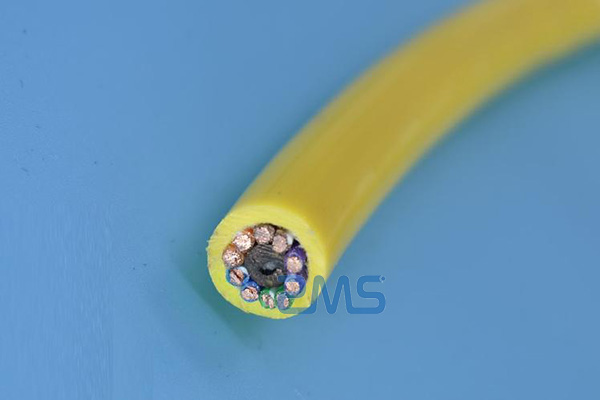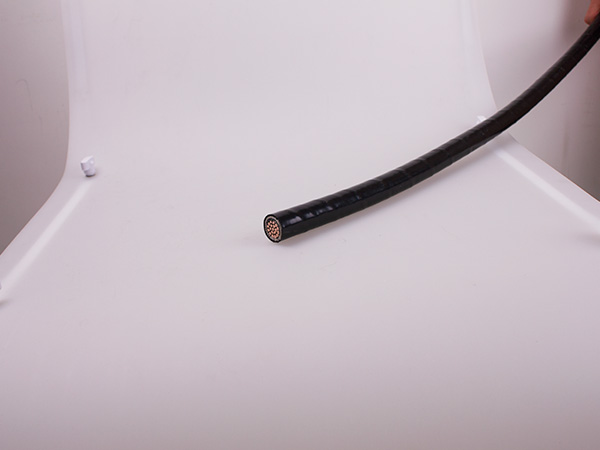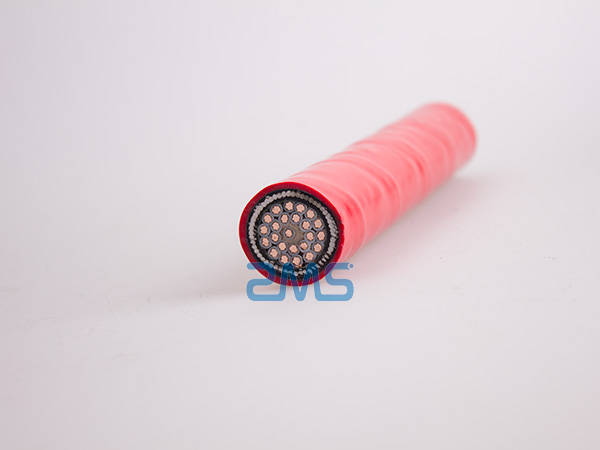Among the many classifications of cables, control cables are also one of the most frequently seen major classifications.
Control cables are used everywhere in life. So for individuals, how to use and choose control cables in general? Today ZMS cable engineer takes you to understand the use and selection of control cables.
Control Cable Introduction
Control cable, like other cables, has a conductor, insulation, sheath, shielding, and other components.
It is suitable for industrial and mining enterprises, and the energy transportation sector.
For the AC rated voltage of 450/750 volts below the control, protection lines, and other occasions use the PVC insulation and PVC sheath control cable.
The Main Series Of Control Cable Varieties
1 polyvinyl chloride insulated control cable
2 natural – butyl rubber insulated control cable
3 polyethylene insulation control cable three series
In addition, there are cross-linked polyethylene insulation and ethylene propylene rubber insulation products.
In the early years of the production of oil-impregnated paper-insulated lead-clad control cable has been eliminated.
Control Cable Performance
1. DC resistance: 20 ℃, 0.4mm copper wire, less than or equal to 148Ω / km, 0.5mm copper wire, less than or equal to 95Ω / km.
2. insulation electrical strength: between the conductor 1min 1kv, not breakdown conductor and shielding 1min 3kv not breakdown
3. insulation resistance: each core and the rest of the core grounding, control cables greater than 10000MΩ.km, HYAT cable greater than 3000MΩ.km.
4. Working capacitance: average 52±2nF/km
5. distal crosstalk defense degree: the average value of the power of the specified combination at 150kHZ is greater than 69dB/km.
Performance Difference
Power cables are used to transmit and distribute high-power electrical energy in the backbone of the power system.
The control cable transmits electrical energy directly from the distribution point of the power system to the power connection lines of various power-using equipment and appliances.
The rated voltage of power cables is generally 0.6/1kV and above, and control cables are mainly 450/750V.
The same specifications of the power cable and control cable in the production of power cable insulation and sheath thickness as the control cable thick.
1. Control cable belongs to the electrical equipment with cable, and the power cable is the cable in the five categories of 2.
2. The standard for control cables is 9330, and the standard for power cables is GB12706.
3. Control cable insulation core color is generally black printed white, and power cable low-voltage are generally color separation.
4. Control cable cross-section is generally not more than 10 square, the power cable is mainly for the transmission of electricity, are generally a large cross-section.
Power Cable And Control Cable Differences
1. Different Functions
Power cables are used to transmit and distribute large functional electrical energy in the backbone of the power system.
Control cables are used for the control connection lines of electric equipment and appliances.
2. Different Categories
Power cables belong to the second of the five categories of cables.
Control cables belong to the third of the five categories of cables.
3. Voltage Level is Different
The rated voltage of power cables is generally 0.6/1kV and above.
Control cables are mainly 450/750V.
4. Structure is Different
The same specifications of power cables and control cables in the production of power cables, insulation, and sheath thickness as the control cable thick.
5. Cross-Sectional Range is Different
Power cable is mainly for the transmission of electricity, generally large cross-sections.
Control cables generally do not exceed 10 square sections.
How to Choose Control Cable
The cables connected from the control center to each system to transmit signals or control operating functions are collectively called control cables.
The early functions of control cables are relatively simple and include indicator displays, instrumentation instructions, operation of relays and switchgear, alarm interlocking systems, etc.
In recent years, due to the widespread use of weak power and computer networks, the selection and application of control cables have put forward new functions and higher requirements
In the use of control cables, generally pay attention to the wire and cable model, and the choice of conductor cross-section.
1. Control Cable Model Selection
Selection of wire and cable, to consider the use, laying conditions, and security
1.1. Use
Power cables, overhead insulated cables, control cables, etc. can be selected.
1.2. Laying Conditions
General plastic insulated cable, steel armor cable, steel wire armor cable, corrosion-resistant cable, etc. can be used.
1.3. Safety Requirements
Can choose non-flame-retardant cables, flame retardant cables, halogen-free flame retardant cables, fire-resistant cables, etc.
2. Control Cable Cross-Section Selection
Determine the use of control cable conductor cross-section, which should generally consider heat, voltage loss, economic current density, mechanical strength, and other selected conditions.
Low-voltage power line because of its larger load current, so generally first select the cross-section according to the heat conditions.
According to the calculation of its voltage loss and mechanical strength.
Low-voltage lighting line because of its higher requirements for voltage level, can first select the section according to the allowable voltage loss conditions, and then test the thermal conditions and mechanical strength.
For high-voltage lines, first, select the cross-section according to the economic current density, and then verify the heat conditions and allowable voltage loss.
And high-voltage overhead lines should also be tested for their mechanical strength.
Here We List a Few Examples
The Selection of Control Cables Laid in Parallel Along the High-Voltage Cable
The rated voltage of the control cable should not be lower than the working voltage of the circuit and should meet the requirements of the transient and frequency overvoltage that may be withstood.
As the longer high-voltage cable lines generally use the longitudinal differential protection mode.
Its protection and monitoring signals such as control cables are often laid in parallel with the high-voltage cable immediately adjacent.
When a single-phase ground fault occurs in the primary system.
Due to electromagnetic induction in the control cable frequency overvoltage value, often may exceed the commonly used control cable insulation level.
Measures to suppress induced overvoltage are the following
1. Control cable spare core grounding
2. Power cable lead packages grounded at both ends
3. Additional parallel grounding lines, etc.
2. Ultra-High Voltage Distribution Device Control Cable Selection.
220KV and above high-voltage power distribution devices laid control cables.
This is usually appropriate to use the control cable with a rated voltage of 600/1000V grade.
If there is good shielding, you can also choose a 450/750V control cable.
The main reasons are as follows
When the high-voltage power distribution device for no-load line or transformer operation, due to electromagnetic induction, electrostatic induction and grounding network potential rise.
All may produce higher interference voltage on the control cable.
The impact of the industrial frequency overvoltage is even greater.
A 220KV substation had a short circuit in the primary system, due to the grounding network potential rise leading to the breakdown of the control cable insulation.
How to Use the Control Cable
1. Rubber Insulated Wire
Fixed laid indoors or outdoors, open, concealed, or through the pipe, as equipment installation with wire.
2. Rubber Insulated and Sheathed Wires
The same as the BX type, suitable for wet places and as an outdoor entry line.
3. Polyvinyl Chloride Insulated and Sheathed Wire
Suitable for fixed laying in places requiring high mechanical protection and dampness, and can be laid openly or concealed.
4. Single-Core Copper-Core Vinyl Chloride Insulated Flexible Wire
Suitable for various mobile appliances, meters, telecommunications equipment, automation devices wiring.
Also used for internal installation.
The installation environment temperature is not lower than -15℃.
Used for light and medium-sized mobile appliances, instruments and meters, household appliances, power lighting, and other places that require softness.
After the control cable is put into operation, there is electrical interference between different cores of the same cable, and between cables laid in parallel immediately adjacent to each other.

The main reasons for electrical interference are as follows
1. Due to the external voltage applied to the capacitive coupling between the line cores under the action of electrostatic interference.
2. Electromagnetic induction interference due to the energized current.
In general, electrical interference is more serious when there are high-voltage, high-current interference sources in the vicinity.
As the distance between the cores of the same cable is smaller, the degree of interference is also much greater than the parallel laying of immediately adjacent cables.
Measures to prevent or mitigate electrical interference, mainly in the following three areas.
1. Control Cable Spare Core Grounding
The practice has proved that the control cable in a spare core grounding.
The amplitude of the interference voltage can be reduced to 25% ~ 50%, and easy to implement, while the cost of the cable increases very little.
2. Do Not Share a Control Cable
2.1 Weak signal control circuit and strong signal control circuit
2.2 Low-level signal and high-level signal circuit
2.3 AC circuit breaker split phase operation of each phase of the weak control circuit
All of the above should not use the same control cable.
However, each pair of round-trip conductors of the weak circuit, such as subordinate to the control cable is not the same.
In the laying may form a ring arrangement, near the power supply of the electromagnetic line cross-chain will feel the potential.
Its value may have a greater impact on the low-level parameters of the weak circuit interference, so the round-trip wire should still be combined with a control cable if appropriate.
3. Metal Shield and Shield Grounding
Metal shielding is an important measure to attenuate and prevent electrical interference.
Including the total shielding of the core, sub-shield, and double-layer total shielding.
Control cable metal shielding type selection should be generated by the possible strength of the impact of electrical interference.
Take into account the comprehensive measures to suppress interference to meet the requirements of reducing interference and overvoltage.
The higher the requirements for the anti-interference effect, the greater the corresponding investment.
When using steel belt armored, steel wire braided total shielding, the price of the cable increases by about 10% to 20%.
Control interference in the strong power circuit.
Because its signal is stronger, in addition to being located in ultra-high-voltage distribution devices or parallels with the high-voltage cable immediately longer, is available without a metal shielding control cable.
Weak signal control circuit using the control cable.
When located in the presence of interference with the environment, and does not have effective anti-interference measures.
It is advisable to use control cables with metal shielding to prevent electrical interference that will produce misoperation of low-level signal circuits or make insulation breakdown and other effects.
A weak circuit control cable if you can pull away enough distance from the power cable, or laid in the steel pipe, may make the external electrical interference reduced to the permissible limit.
Computer monitoring system signal circuit control cable, its shielding type selection principles are as follows
1. Switching signal, available total shielding.
2. High-level analog signal, it is appropriate to use the total shield on the core, if necessary, also available on the core of the sub-shield.
3. For Low-level analog signals or pulse signals, it is desirable to use the sub-shield on the core, if necessary, can also be used with the sub-shield on the core of the composite total shield.
On the grounding of the shield, the following points should be noted
1. A Point Grounding
In the computer control system of the analog signal circuit of the control cable shield, it is appropriate to use a centralized grounding.
The reason is based on the requirement to ensure the normal operation of the computer monitoring system.
Because even if only about 1V interference voltage, may also cause the fallacy of logic judgment.
A centralized one-point grounding can avoid ground loop currents.
2. Two-Point Grounding
In addition to the computer monitoring, the system control cable shield only allows a concentrated point of grounding.
For other control cable shields, when the electromagnetic induction interference is larger, it is appropriate to use two points of grounding.
And when the interference of electrostatic induction is larger, a point of grounding is used.
3. Double shielding or compound total shielding of the inner shield layer is appropriate to use as a point of grounding, while the outer shield layer can be two points of grounding.
4. Selection of two-point grounding should also be considered in the role of transient current, the shield will not be burned.
The above is about the selection and use of control cable precautions.
With extremely rapid global development, the use of cables is increasing. And various cable resources that can be used continuously are being developed.
ZMS cable company has been concerned about cable development, always adhering to providing high-quality cables, good value for money, considerate service, products after a strict manual qualification audit, trustworthy.
—ZMS Cable Group


